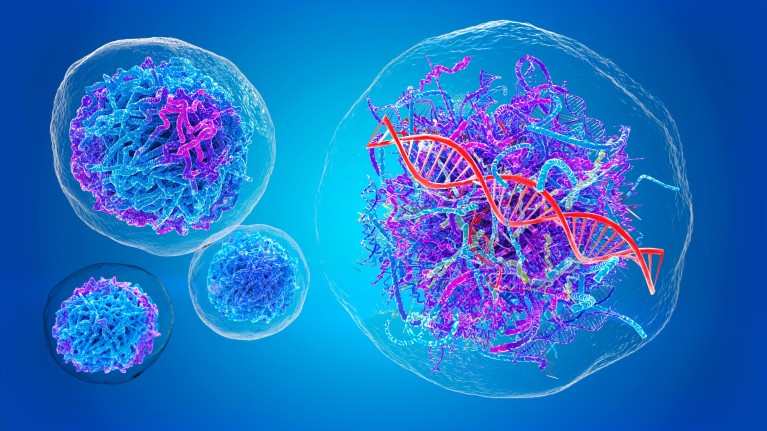
Synthetic lethality can lead to cancer cells self destructing when they go into mitosis.Credit: Giovanni Cancemi
Efforts to repeat the success of first-in-class drugs targeting the DNA damage response (DDR) have so far failed to deliver. Poly(ADP)ribose polymerase (PARP) inhibitors, which are drugs that exploit a cancer’s specific genetic vulnerability, were first approved a decade ago1. Since then, the field has seen more hurdles than breakthroughs. So, what happened?
“If you look at the DDR concept, there are several reasons for this lack of clinical success,” says Luke Piggott, principal scientist at Debiopharm, a Swiss biopharmaceutical company working in oncology and infectious diseases. “DDR machinery targets are essential for genome integrity and normal tissue homeostasis, so we’re working in a space with a very narrow therapeutic index.”
Nevertheless, PARP inhibitors proved that the principle works, and attempts to develop follow-on drugs are providing valuable lessons. Might synthetic lethality be back in play?
Lessons from the clinic
It has become clear that one of the keys to success for synthetic lethality is developing biomarkers in parallel with the drug candidates. “You need to find the appropriate setting for these inhibitors to work,” says Noemie Luong, associate principal scientist, translational pharmacology at Debiopharm. DDR agents rely on specific genomic vulnerabilities within cancer cells that only some patients have. “You must find the right biomarkers to identify those people who may benefit the most from the treatment.”
A second challenge is eliminating off-target effects. One example is the development of inhibitors against WEE1, a kinase operating at the G2 and S phase cell cycle checkpoints. Blocking WEE1 removes the opportunity for cancer cells to repair DNA damage before mitosis. Retaining such massive DNA damage results in mitotic collapse and cell death [see video]. But early WEE1 inhibitors also had off-target effects on other checkpoint kinases2 whose jobs were to stop damaged cells entering mitosis and ended up having additional toxicities to mitigate, explains Piggott.
“We’ve used insights from other development programmes to develop ‘cleaner’ inhibitors, which we anticipate will likely have an improved efficacy and reduced toxicities compared to some of the first drug candidates. We have seen this previously with CDK4/6 inhibitors where improved selectivity, compared to first generation CDK inhibitors, was key to achieving a therapeutic profile to gain approval,” says Piggott.
New combinations
As DDR target space is explored, synthetic lethality is expanding beyond the original drug-gene approach, used by the PARP inhibitors, to drug-drug synthetic lethality in which drugs alone are used to simultaneously knock out critically interdependent repair components.
Artificial intelligence (AI) is proving valuable for identifying both novel drug-gene and drug-drug synthetic lethal combinations and the necessary biomarkers. “Unlike for most other cancer agents, the right biomarker might not be a single mutated gene but a more complex pattern of alterations which together confer sensitivity,” Luong explains. “We’re using AI to generate composite signatures from multi-omics data.”
Beyond solving the challenges of the first-generation DDR approaches, Debiopharm is also looking to enhance its portfolio to address critical needs in oncology. “As many cancers with high genomic instability tend to spread to the brain, a key goal is to achieve brain penetrance,” says Piggott. “This would be truly beneficial to these patients with very limited options.”
Whether it’s using a gene-drug or drug-drug approach, Debiopharm hopes that reducing the toxicity of DDR inhibitors will allow them to safely combine treatments that deal cancer cells an overwhelming knock-out blow. “Our goal,” affirms Piggott, “is to kill cancer cells before they can adapt and develop drug resistance, to quickly send them past the point of no return.”


